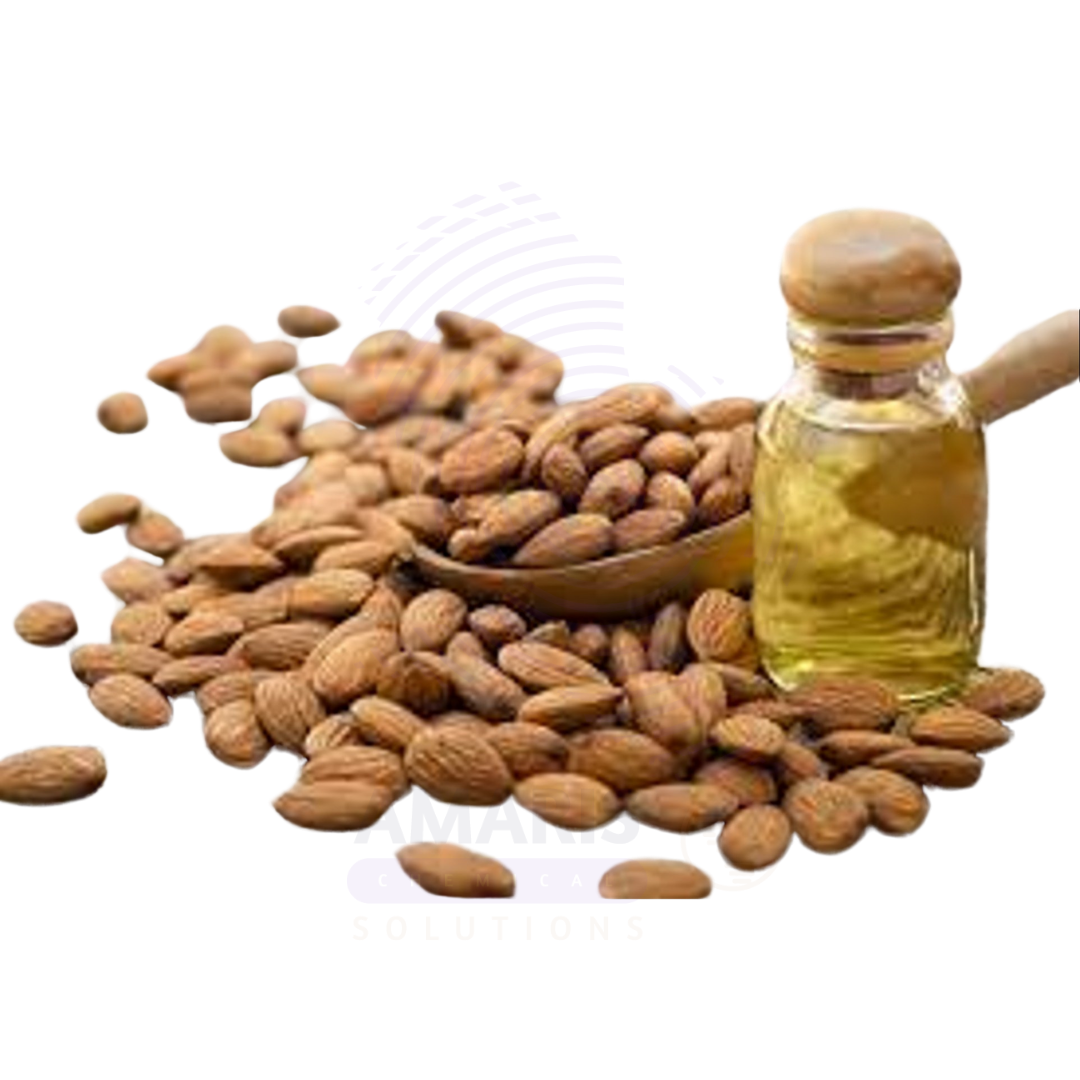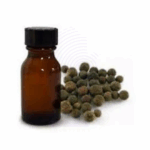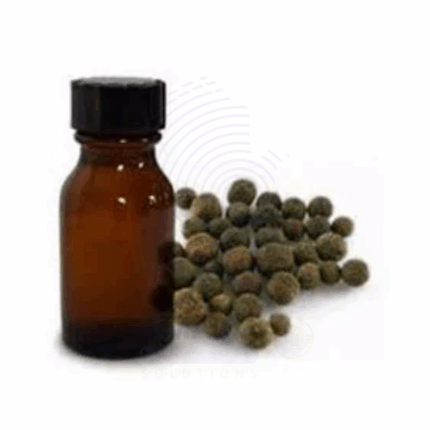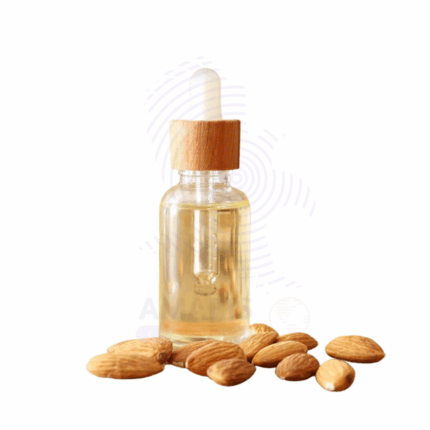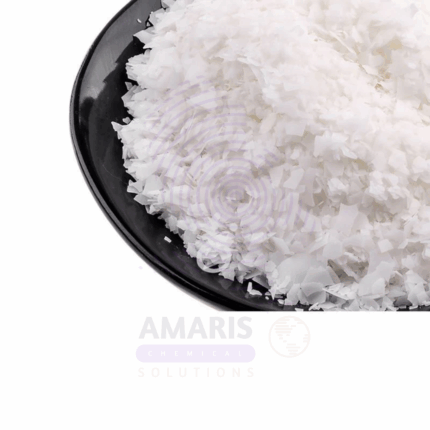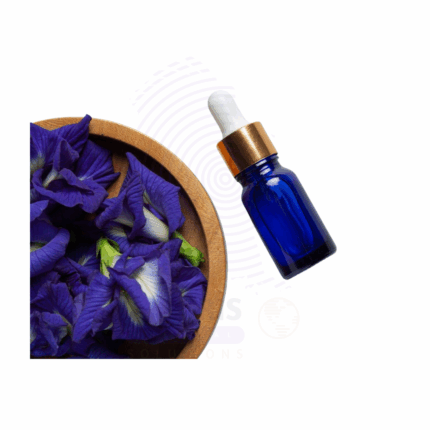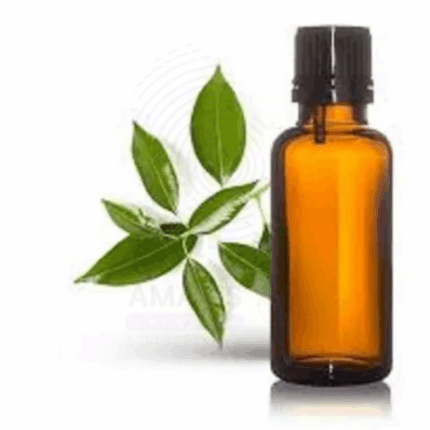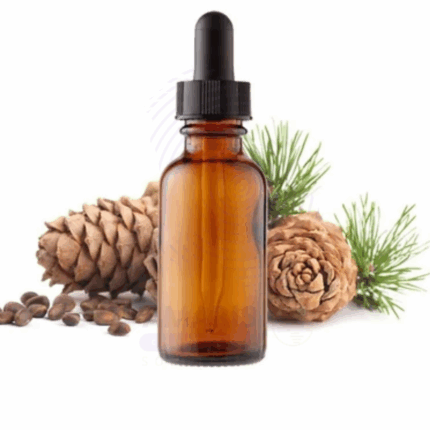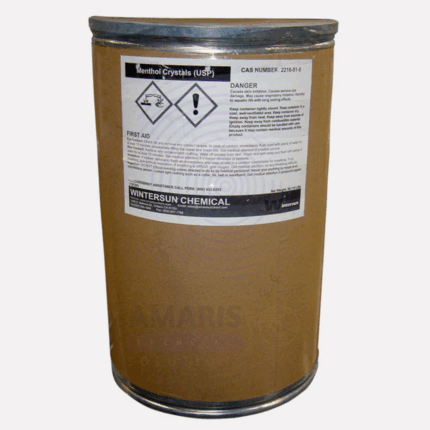Almond Bitter Oil
Almond Bitter Oil, derived from the kernels of bitter almonds (Prunus amygdalus var. amara), is an essential oil known for its sharp, nutty, and marzipan-like aroma. This oil is produced through steam distillation of crushed bitter almond kernels and contains a naturally occurring compound called benzaldehyde, which gives it its characteristic scent. In purified form (free of hydrogen cyanide), bitter almond oil is used in fragrance, flavoring, and pharmaceutical applications.
Due to its potent aroma and biochemical properties, it is widely used in perfumery, baked goods flavoring (in controlled quantities), aromatherapy, and traditional topical remedies. It is important to distinguish between natural bitter almond oil, which must be detoxified, and synthetic benzaldehyde, which is commonly used as a substitute in commercial formulations.
Almond Bitter Oil
Primary Uses
- Cosmetics and Personal Care
- Used as a fragrance component in perfumes, creams, lotions, and bath products for its sweet almond-like aroma.
- Added to high-end soaps and body oils for a rich, nutty scent.
- Used in natural and artisanal deodorants and grooming products.
- Occasionally included in lip care and hand creams (in fragrance-safe concentrations).
- Applied in massage oils for its aromatic and skin-soothing properties (always diluted).
- Pharmaceuticals
- Utilized in topical analgesic balms for minor pain relief and irritation calming (diluted).
- Employed as a flavoring agent in oral medications, especially cough syrups and lozenges.
- Historically used in traditional systems for its soothing scent and mild anesthetic effects.
- Food and Beverage Industry
- Used in trace amounts in baked goods, marzipan, candies, and confectionery for a sweet almond flavor (must be food-grade and detoxified).
- Applied in flavor extracts and essences for pastries, cookies, and liqueurs (e.g., amaretto-style flavors).
- Used in certain traditional desserts and syrups across Mediterranean and Middle Eastern cuisines.
- Fragrance & Perfumery
- Featured as a top or middle note in gourmand and oriental fragrance blends.
- Commonly used in luxury perfumes and niche body sprays for its unique, nostalgic aroma.
- Blended with vanilla, cherry, or floral notes to create rich, dessert-like scent profiles.
Secondary Uses
- Aromatherapy & Wellness
- Used in diffusers or inhalation blends to promote a sense of warmth and comfort.
- Added to calming blends aimed at emotional balance or nostalgic sensory therapy.
- Occasionally used in personalized aromatherapy blends as a softening note.
- Household and Artisan Products
- Used in candles and potpourri for a warm, sweet, nutty fragrance.
- Added to homemade air fresheners, linen sprays, and room mists.
- Occasionally used in high-end handmade products like solid perfumes and wax melts.
1. Basic Identification Attributes
- Botanical Name: Prunus amygdalus var. amara
- Common/Trade Name: Almond Bitter Oil / Bitter Almond Oil
- INCI Name: Prunus Amygdalus Amara Kernel Oil
- CAS Number: 8007-69-0
- HS Code: 3301.29
- Synonyms: Bitter Almond Essential Oil, Amygdalin Oil, Benzaldehyde Oil
2. Physical & Chemical Properties
- Physical State: Liquid essential oil
- Color & Odor: Colorless to pale yellow; strong, sweet almond or marzipan-like aroma
- Solubility: Insoluble in water; soluble in alcohol and fixed oils
- Refractive Index: 1.540 – 1.560
- Specific Gravity: 1.045 – 1.085
- Main Components: Benzaldehyde (main constituent), amygdalin derivatives (must be detoxified)
3. Safety & Hazard Attributes
- GHS Classification: Toxic if not purified; may contain hydrogen cyanide (HCN)
- Toxicity: Only detoxified, food-grade versions are safe for use; always use diluted
- Exposure Limits: Strict regulatory limits on benzaldehyde and cyanogenic compounds
- Allergen Information: Contains potential allergens; perform patch testing before topical use
4. Storage & Handling Attributes
- Storage Conditions: Store in a cool, dark, and well-ventilated area
- Container Type: Amber glass bottles or stainless steel drums
- Shelf Life: Up to 24 months if stored correctly
- Handling Precautions: Handle with care; avoid exposure to heat, air, and moisture
5. Regulatory & Compliance Attributes
- Only HCN-free, detoxified oil is allowed for use in food and personal care
- Subject to IFRA restrictions in cosmetic and fragrance formulations
- Produced in GMP-compliant facilities
- Must comply with FDA and EFSA limits for food-grade usage
6. Environmental & Health Impact
- Biodegradability: Biodegradable under normal conditions
- Ecotoxicity: High toxicity in raw/unrefined form due to cyanide content
- Bioaccumulation: Not expected to bioaccumulate if used responsibly
Safety Handling Precautions
- PPE Required: Gloves and goggles recommended when handling raw or concentrated oil
- Handling Guidelines: Only use purified (HCN-free) versions; always dilute before topical use
First Aid Measures
- Inhalation: Move to fresh air; seek medical attention if symptoms persist
- Skin Contact: Wash thoroughly with soap and water; discontinue use if irritation develops
- Eye Contact: Rinse immediately with water; get medical help if needed
- Ingestion: Seek emergency medical attention; ingestion of unpurified oil is dangerous
Firefighting Measures
- Fire Hazards: Flammable oil; avoid heat and ignition sources
- Extinguishing Media: Dry chemical, CO₂, foam, or water spray
- Special Precautions: Use full protective gear and breathing apparatus
- Hazardous Combustion Products: Benzaldehyde vapors, carbon oxides


 Preservatives(food)
Preservatives(food) Flavor Enhancers
Flavor Enhancers Acidulants
Acidulants Sweeteners
Sweeteners Antioxidants
Antioxidants Colorants(food)
Colorants(food) Nutraceutical Ingredients (food)
Nutraceutical Ingredients (food) Nutrient Supplements
Nutrient Supplements Emulsifiers
Emulsifiers
 Collectors
Collectors Dust Suppressants
Dust Suppressants Explosives and Blasting Agents
Explosives and Blasting Agents Flocculants and Coagulants
Flocculants and Coagulants Frothers
Frothers Leaching Agents
Leaching Agents pH Modifiers
pH Modifiers Precious Metal Extraction Agents
Precious Metal Extraction Agents
 Antioxidants(plastic)
Antioxidants(plastic) Colorants (Pigments, Dyes)
Colorants (Pigments, Dyes) Fillers and Reinforcements
Fillers and Reinforcements Flame Retardants
Flame Retardants Monomers
Monomers Plasticizers
Plasticizers Polymerization Initiators
Polymerization Initiators Stabilizers (UV, Heat)
Stabilizers (UV, Heat)
 Antifoaming Agents
Antifoaming Agents Chelating Agents
Chelating Agents Coagulants and Flocculants
Coagulants and Flocculants Corrosion Inhibitors
Corrosion Inhibitors Disinfectants and Biocides
Disinfectants and Biocides Oxidizing Agents
Oxidizing Agents pH Adjusters
pH Adjusters Scale Inhibitors( water)
Scale Inhibitors( water)
 Antioxidants(cosmetic)
Antioxidants(cosmetic) Emollients
Emollients Fragrances and Essential Oils
Fragrances and Essential Oils Humectants
Humectants Preservatives
Preservatives Surfactants(cosmetic)
Surfactants(cosmetic) Thickeners
Thickeners UV Filters
UV Filters
 Fertilizers
Fertilizers Soil Conditioners
Soil Conditioners Plant Growth Regulators
Plant Growth Regulators Animal Feed Additives
Animal Feed Additives Biostimulants
Biostimulants Pesticides (Herbicides, Insecticides, Fungicides)
Pesticides (Herbicides, Insecticides, Fungicides)
 Active Pharmaceutical Ingredients (APIs)
Active Pharmaceutical Ingredients (APIs) Excipients
Excipients Solvents(pharmaceutical)
Solvents(pharmaceutical) Antibiotics
Antibiotics Antiseptics and Disinfectants
Antiseptics and Disinfectants Vaccine Adjuvants
Vaccine Adjuvants Nutraceutical Ingredients (pharmaceutical)
Nutraceutical Ingredients (pharmaceutical) Analgesics & Antipyretics
Analgesics & Antipyretics
 Analytical Reagents
Analytical Reagents Solvents(lab)
Solvents(lab) Chromatography Chemicals
Chromatography Chemicals Spectroscopy Reagents
Spectroscopy Reagents microbiology-and-cell-culture-reagents
microbiology-and-cell-culture-reagents Molecular Biology Reagents
Molecular Biology Reagents Biochemical Reagents
Biochemical Reagents Inorganic and Organic Standards
Inorganic and Organic Standards Laboratory Safety Chemicals
Laboratory Safety Chemicals Specialty Laboratory Chemicals(Special Laboratory Equipment)
Specialty Laboratory Chemicals(Special Laboratory Equipment)
 Demulsifiers
Demulsifiers Hydraulic Fracturing Fluids
Hydraulic Fracturing Fluids Scale Inhibitors(oil)
Scale Inhibitors(oil) Surfactants(oil)
Surfactants(oil) Drilling Fluids
Drilling Fluids
 Dyes and Pigments
Dyes and Pigments Bleaching Agents
Bleaching Agents Softening Agents
Softening Agents Finishing Agents
Finishing Agents Antistatic Agents
Antistatic Agents
 Admixtures
Admixtures Waterproofing Agents
Waterproofing Agents Sealants and Adhesives
Sealants and Adhesives Curing Compounds
Curing Compounds Concrete Repair Chemicals
Concrete Repair Chemicals Anti-Corrosion Coatings
Anti-Corrosion Coatings
 Surfactants(cleaning)
Surfactants(cleaning) Builders
Builders Enzymes
Enzymes Solvents (Cleaning)
Solvents (Cleaning) Fragrances
Fragrances
 Electronic Chemicals
Electronic Chemicals Catalysts
Catalysts Lubricants
Lubricants Photographic Chemicals
Photographic Chemicals Refrigerants
Refrigerants Automotive chemicals
Automotive chemicals Pyrotechnic Chemicals
Pyrotechnic Chemicals
 Biodegradable Surfactants
Biodegradable Surfactants Bio-based Solvents
Bio-based Solvents Renewable Polymers
Renewable Polymers Carbon Capture Chemicals
Carbon Capture Chemicals Wastewater Treatment Chemicals
Wastewater Treatment Chemicals
 Pigments
Pigments Solvents(paint)
Solvents(paint) Specialty Coatings
Specialty Coatings Binders/Resins
Binders/Resins Additives
Additives Driers
Driers Anti-Corrosion Agents
Anti-Corrosion Agents Functional Coatings
Functional Coatings Application-Specific Coatings
Application-Specific Coatings
 Fresh Herbs
Fresh Herbs Ground Spices
Ground Spices Whole Spices
Whole Spices Spice Blends
Spice Blends Dried Herbs
Dried Herbs
 Leavening Agents
Leavening Agents Dough Conditioners
Dough Conditioners Flour Treatments
Flour Treatments Fat Replacers
Fat Replacers Decoratives
Decoratives Preservatives(baking)
Preservatives(baking)
 Plasticizers & Softeners
Plasticizers & Softeners Reinforcing Agents
Reinforcing Agents Adhesion Promoters
Adhesion Promoters Vulcanizing Agents
Vulcanizing Agents Antidegradants
Antidegradants Blowing Agents
Blowing Agents Fillers & Extenders
Fillers & Extenders Accelerators & Retarders
Accelerators & Retarders